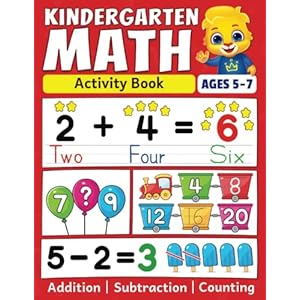
Making certain that your classes align with instructional requirements is crucial for sustaining consistency, assembly state and district necessities, and offering college students with a structured studying expertise.
However how precisely do you align classes with requirements? Do you begin with the lesson and discover a matching commonplace, or do you start with the requirements and plan accordingly? Under, we break down the method in easy phrases, making it simple to comply with.
Step 1: Begin with the Requirements
Step one in aligning your classes is to take a look at the required requirements to your grade stage and topic. Most districts present an inventory of requirements that define the important thing abilities and data college students must grasp. Some districts additionally provide pacing guides, which arrange these requirements right into a logical educating order all through the tutorial 12 months. (Pacing guides are so useful!)
In case your district gives a pacing information, it’s a useful roadmap for planning classes. If not, it’s possible you’ll must create your personal curriculum map primarily based on the requirements.
Step 2: Perceive the Pacing Information (If Obtainable)
A pacing information helps construction when and the way lengthy to show every commonplace. Some colleges present these guides, whereas others require academics to develop their very own. For those who don’t have a pre-made pacing information, think about working with fellow grade-level academics to create one.
A typical pacing information contains:
- A common timeframe for when to show every commonplace (e.g., August – Quantity Sense)
- The particular commonplace(s) to be coated
- Sources or methods to assist educate the usual
Step 3: Break Down the Requirements
Many requirements are broad and could appear overwhelming at first look. Breaking them down into smaller, extra manageable targets could make them simpler to show. Ask your self:
- What are the important thing ideas college students want to know?
- What abilities ought to they be capable of display by the tip of the lesson?
- Are there prerequisite abilities they should know first?
By answering these questions, you may create clear studying targets to your classes.
Step 4: Design Your Classes Across the Requirements
When you perceive the requirements and have a pacing information (if out there), it’s time to develop your lesson plans. Some academics favor to create partaking lesson actions first after which match them with a related commonplace. Nevertheless, a simpler strategy is to construct classes that immediately deal with the required requirements from the beginning.
Listed below are some ideas for creating aligned classes:
- Use backward design: Begin with the educational end result (commonplace) and work backward to plan your classes.
- Incorporate a number of educating methods: Interact college students by way of discussions, hands-on actions, tasks, and expertise.
- Make it related: Discover methods to attach the usual to real-life purposes, so college students see its worth.
Step 5: Differentiate to Meet Pupil Wants
Not all college students be taught on the identical tempo or in the identical means. When planning classes, think about:
- Scaffolding: Present additional help for struggling learners.
- Enrichment alternatives: Supply challenges for superior college students.
- Versatile grouping: Use small teams, one-on-one instruction, or peer collaboration to strengthen studying.
For academics working with particular training college students or these in multi-level lecture rooms, it is probably not possible to strictly comply with state requirements. In these instances, give attention to educating useful abilities whereas incorporating as a lot of the usual as attainable.
Step 6: Discover and Arrange Sources
Collect supplies that align with the usual and lesson targets. Some academics create a useful resource financial institution with:
- Textbooks or on-line curriculum assets
- Worksheets, actions, and tasks
- Web sites and interactive studying instruments
- Movies or real-world examples
Take into account linking these assets on to your pacing information for simple entry all year long. You may also wish to create a Google Drive folder for every lesson or month with the assets you’ll want to your classes.
Step 7: Assess and Regulate
Evaluation is a key element of standards-aligned educating. Use a wide range of evaluation strategies to examine scholar understanding:
- Formative assessments: Exit tickets, quizzes, classroom discussions
- Summative assessments: Exams, essays, ultimate tasks
- Efficiency-based assessments: Shows, experiments, real-world purposes
If assessments present that college students are fighting a regular, revisit and alter your lesson strategy. Likewise, if college students grasp a regular rapidly, think about transferring on or diving deeper into associated subjects.
Step 8: Replicate and Revise
After educating a lesson, take time to replicate on what labored properly and what could possibly be improved. Ask your self:
- Did college students grasp the usual?
- Have been the actions partaking and efficient?
- What modifications ought to I make subsequent time?
Hold notes in your pacing information or lesson plans so you may refine them for future years.
Do You Must Comply with Requirements in Order?
Not essentially. Whereas many pacing guides recommend an order, flexibility is vital. Some requirements construct upon others, making sequence essential, however others may be taught in a special order primarily based on scholar wants or real-world connections. All the time prioritize scholar studying over inflexible sequencing.
By following these steps, you may guarantee your classes are well-aligned with instructional requirements whereas nonetheless being partaking and efficient to your college students. Whether or not you’re working with a district-provided pacing information or constructing your personal, considerate planning and suppleness will show you how to create significant studying experiences.
YOU MAY ALSO LIKE…
Trending Merchandise











